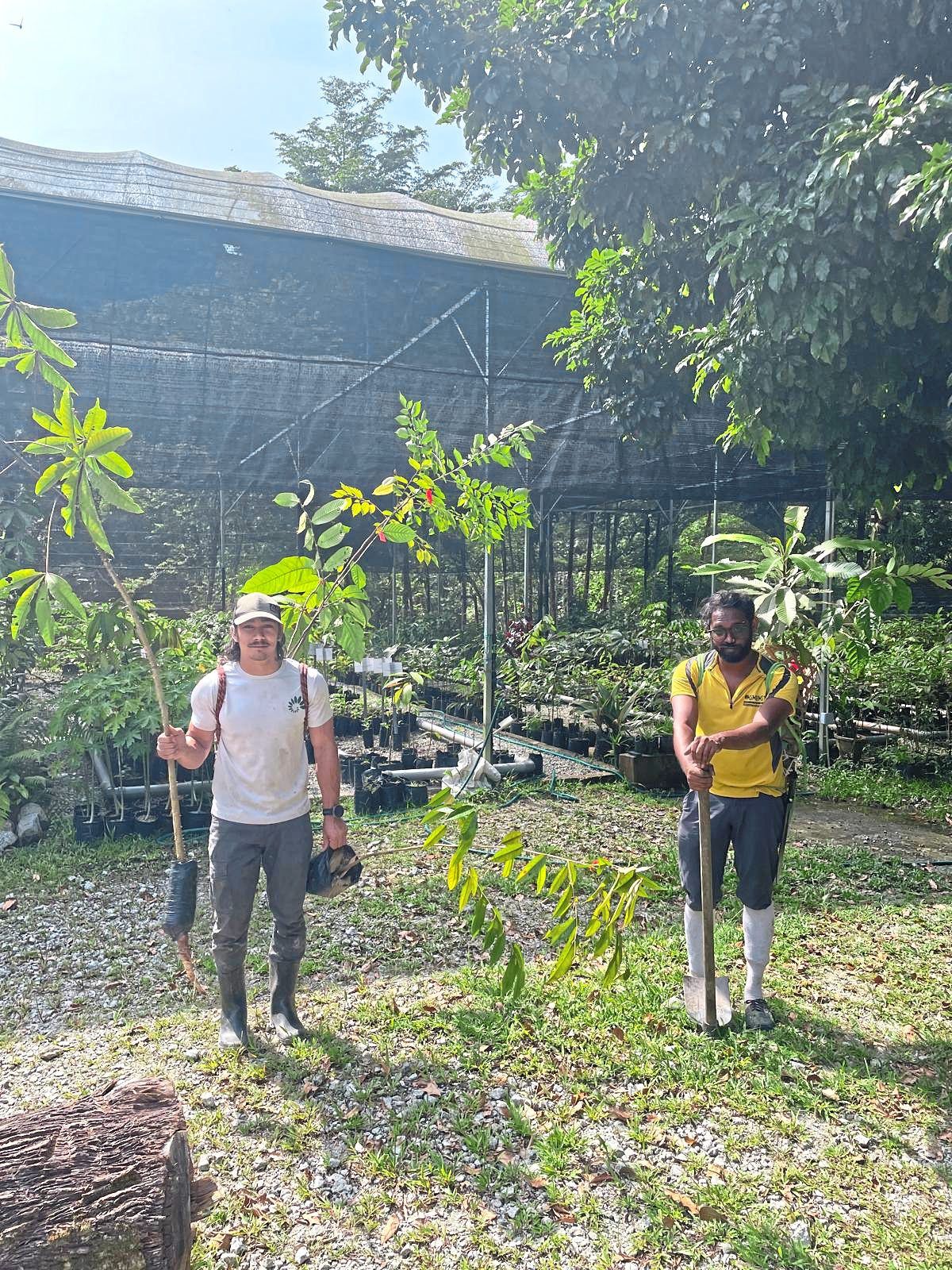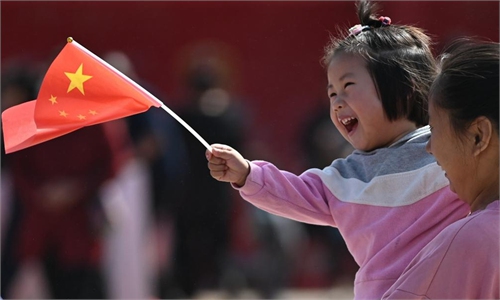In addition to vegetables and shrubs, trees play a role in edible gardens as well. Usually a sign of mature soil and ecology, fruit trees are able to give us fruiting bounties, provide shade and also contribute to the local ecology and microbiomes of soils.
But often, trees are overlooked in the urban setting, and tree care is relatively uncommon.
The Energy and Natural Resources Ministry has set an ambitious goal to plant 100 million trees nationwide by 2025, with one million targeted for the Federal Territories alone.
While these targets are promising, ensuring the long-term care of these trees is crucial for their success and the safety of urban spaces.
Arborists, foresters and conservationists are not just tree care professionals; they are protectors of biodiversity, climate resilience and sustainable urban growth. Puteri Noorlela (right) and her team using a resistograph at UUM Sintok in Kedah to assess the structural stability of two mature trees near the clubhouse.
Puteri Noorlela (right) and her team using a resistograph at UUM Sintok in Kedah to assess the structural stability of two mature trees near the clubhouse.
But how can we inspire more Malaysians to step into these vital roles?
In this feature, we speak to an arborist and a conservation biologist – tree guardians of the modern age – on what their work is like.
A sense of purpose
Puteri Noorlela Bahrun, a certified arborist from the International Society of Arboriculture (ISA) and principal at Raintree Arborist, says being an arborist is a dream job – one in which she can say “no” to the unnecessary removal of trees and help ensure their preservation in urban development.
Puteri Noorlela’s love for trees began long before she knew about arboriculture. Watching forests bulldozed and trees carelessly cut down ignited a desire in her to protect them.
Arborists often describe their work as deeply fulfilling. As Puteri Noorlela says, “Every day we go to work full of passion. We love the trees and the environment, and we’re always excited to check the health of trees before development begins.”
This passion drives many arborists, despite the physical demands and limited public understanding of their role. She adds, “Even on car journeys, we refresh our knowledge, studying the character of trees, assessing defects and determining the possibility of tree failure.” Puteri Noorlela (left) at Selangor Maritime Gateway’s mangroves, determining the bakau tree that will be removed to make way for a boardwalk. They will also identify the ‘mother tree’ to make sure it is protected.
Puteri Noorlela (left) at Selangor Maritime Gateway’s mangroves, determining the bakau tree that will be removed to make way for a boardwalk. They will also identify the ‘mother tree’ to make sure it is protected.
She believes that caring for trees is more than just a job – it’s a mission to improve the health of communities and safeguard future generations.
“When you save or care for a tree, you’re leaving a positive legacy that will last for decades. It’s always my dream to help save as many trees as I can, but of course, as an arborist, safety is always first.”
A tree’s best friend
Arborists, often known as “tree doctors”, are specialists in tree cultivation, management and care. They assess tree health, conduct risk evaluations and tree inventories, and manage trees grown in places like eco-resorts, university campuses and urban districts. Using tools such as resistographs, they detect internal decay in trees to ensure safety.
Arborists consult on endangered species and work with developers and landscape architects to preserve and integrate the right trees into urban plans, balancing conservation with development.
Despite its essential role, arboriculture remains underappreciated in Malaysia.
 Arborists conducting an advanced assessment to check the structural integrity of a tree at Taman Tugu, Kuala Lumpur. Photo: Raintree Arborist
Arborists conducting an advanced assessment to check the structural integrity of a tree at Taman Tugu, Kuala Lumpur. Photo: Raintree Arborist
Puteri Noorlela explains: “Twelve years ago, when we said we were arborists, people asked, ‘Arbor-what?’ Today, more people are realising it’s about preserving trees, not just cutting them down.”
With only around 150 certified arborists in Malaysia compared to Singapore’s 600 as of 2024, the profession is still relatively young, but it’s gaining traction in educational institutions.
Malaysian Society of Arborists president Mohd Zailani Jamil stresses that trees are often an afterthought in development, but they are crucial for sustainable planning. Unfortunately, arboriculture is seen as less prestigious than other careers, contributing to the low number of certified arborists.
Career pathways
For those interested in becoming an arborist, the path is somewhat unconventional. Currently, there are no specific arboriculture degrees offered in Malaysia, but universities such as Universiti Putra Malaysia are beginning to offer courses related to urban forestry and arboriculture.
Aspiring arborists typically come from related fields such as horticulture, environmental science or landscape architecture. After gaining relevant experience, they can sit for the ISA certification exam, which is recognised globally.
“The ISA certification is a stamp of credibility. Once you pass the exam, you can work anywhere in the world as an arborist,” explains Puteri Noorlela, who also consults in Cambodia, where there is a lack of certified arborists.
The practical aspects of arboriculture are the best way to learn, she adds.
 This nesting lineated barbet, spotted in TTDI Park, which nests in holes bored out by other species on mature trees, is a perfect example of how tree biodiversity can support wildlife in urban environments given enough time and connectivity. Photo: Adam Kamal
This nesting lineated barbet, spotted in TTDI Park, which nests in holes bored out by other species on mature trees, is a perfect example of how tree biodiversity can support wildlife in urban environments given enough time and connectivity. Photo: Adam Kamal
“Theory can only take you so far,” says Puteri Noorlela. “You need to work hands-on with trees in the field, understand their biology, and learn how to assess their health. Every tree is different, and you learn something new every day.”
It takes a village
According to conservation biologist Adam Kamal, loving a tree goes beyond appreciating its beauty; it requires understanding its complexity. In the tropics, trees often host their own ecosystem with many insects potentially spending their entire lives on one tree.
“Trees are one-part coral reef, one-part solar panel and one-part building,” Adam describes, illustrating how complex and important trees are to support life, harness energy and provide habitat.
 This nesting lineated barbet, spotted in TTDI Park, which nests in holes bored out by other species on mature trees, is a perfect example of how tree biodiversity can support wildlife in urban environments given enough time and connectivity. Photo: Adam Kamal
This nesting lineated barbet, spotted in TTDI Park, which nests in holes bored out by other species on mature trees, is a perfect example of how tree biodiversity can support wildlife in urban environments given enough time and connectivity. Photo: Adam Kamal
Tree care is not an isolated field. Arborists today often collaborate with other professionals, including ecologists, urban planners and landscape architects. The future of tree care, especially in urban settings, relies on an interdisciplinary approach that takes into account biodiversity, climate change and human needs.
“We need people who are not just passionate about trees but about the ecosystems they’re part of. Tree planting in general, with no consideration to the life history, can be detrimental and end up releasing more carbon than storing it,” says Adam.
Citizens have a big role to play as well. Puteri Noorlela emphasises the need for respect: avoid littering or vandalising trees and give them space to grow. With climate change, planting the right trees in the right places is our simplest, most effective solution to reduce ground temperature and air pollution. If you can’t plant a tree, she advises, respect and protect the ones we already have.
Building a culture of tree care
To protect Malaysia’s urban forests, we urgently need to cultivate a culture where trees are valued and seen as a vital part of our environment, society and economy. This requires better policies, greater public awareness and a stronger emphasis on careers in arboriculture, forestry and conservation as well as landscape architecture and urban planning.
The next generation must be inspired to take up these roles with a sense of purpose, ensuring that Malaysia’s forests thrive amid urbanisation and climate change. By embedding tree care into national planning and education, we can create a future where trees are recognised for their full value and safeguarded for generations to come.
For more info, visit www.parm.com.my or www.raintreearborist.com. Ready, Set, Grow! is a column brought to you by Eats, Shoots & Roots, a social enterprise with the aim of connecting people to nature through growing food. Follow them on Instagram and Facebook to stay updated on upcoming workshops and events.




















